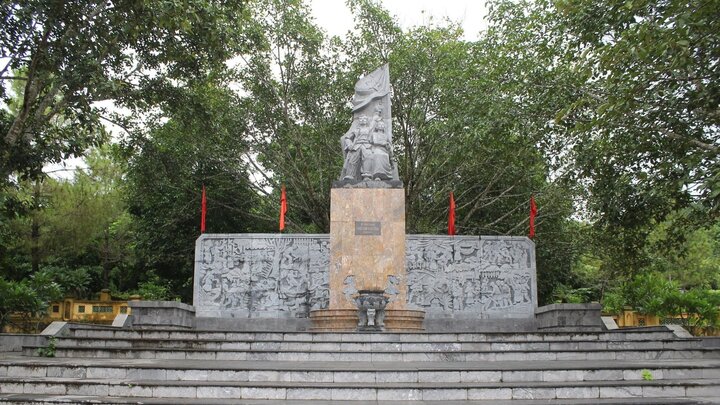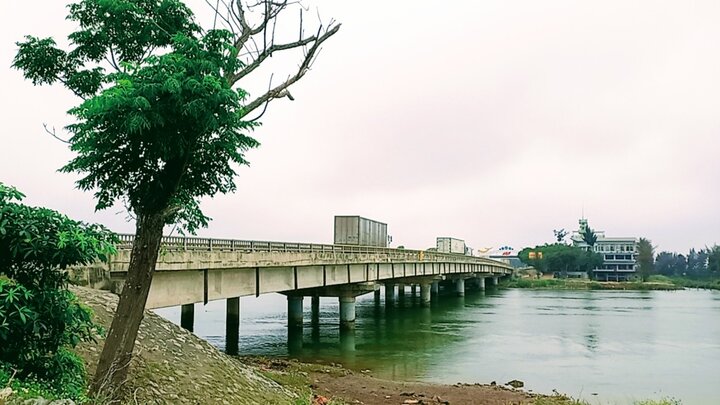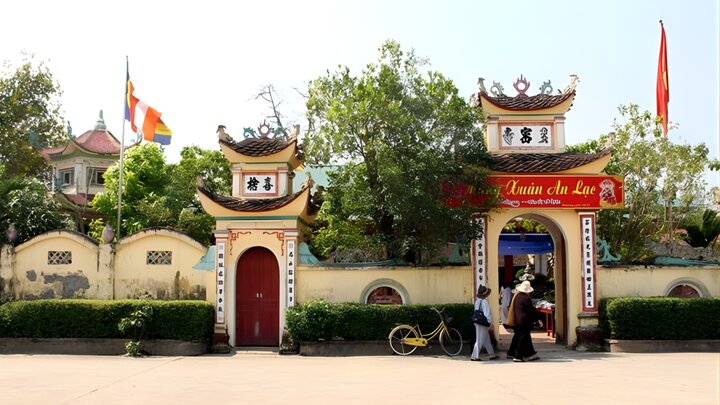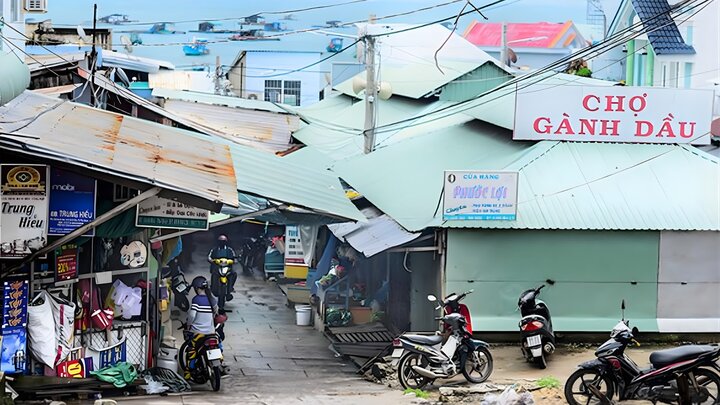1. General introduction to Phu Trinh and Nghe Vet
1.1 General introduction to Phu Trinh and Nghe Vet
Located on the left bank of the poetic Ma River, belonging to Sao Son and Bien Thuong villages, Vinh Loc commune, Phu Trinh and Nghe Vet is a national-level historical relic complex bearing the imprint of the authority and spiritual energy of Thanh Hoa land. Built with its back against the imposing Bao mountain range, this is considered a land of "exceptional terrain and outstanding people" where the famous Trinh family, prominent in the nation's history, originated.
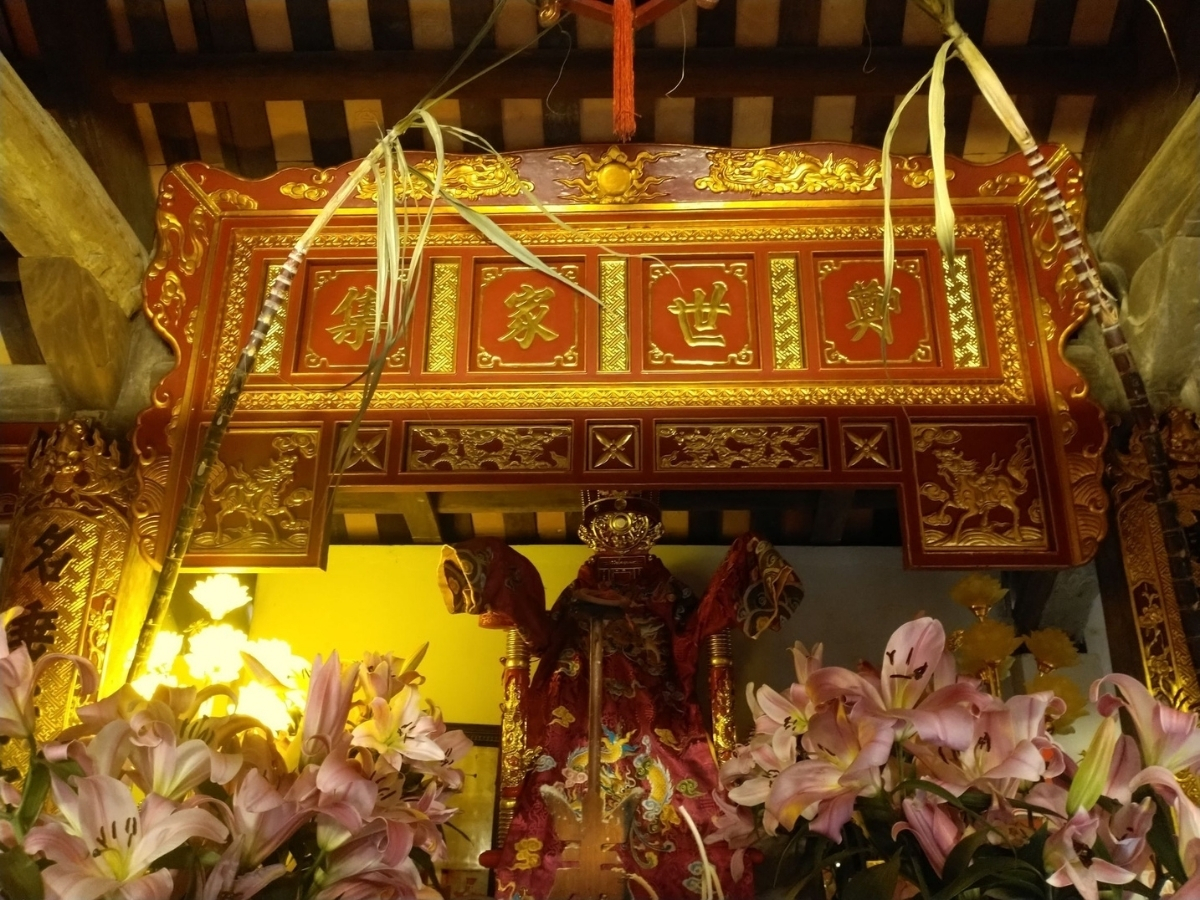
Phu Trinh is associated with Minh Khang Thai Vuong Trinh Kiem. (Source: Collected)
The relic space possesses an ancient and solemn beauty, surrounded by picturesque rivers and mountains. Through the vicissitudes of time, Phu Trinh and Nghe Vet have retained the spirit and essence of the Le Trung Hung period, evoking the golden era when the Trinh lords held power, and together with the Le dynasty, built a prosperous nation.
1.2 Historical and Cultural Values
Phu Trinh is a symbol of the power and wisdom of Minh Khang Thai Vuong Trinh Kiem. He was the founder of the Trinh dynasty, laying the foundation for over two centuries of rule (1545 - 1787). This was once the place where the Trinh lords deliberated on national affairs, received envoys, and became an important political and military center of the country during the Le Trung Hung period.
Concurrently, Nghe Vet holds profound spiritual significance, serving as a place of worship for the Village Guardian Deity and 12 generations of Trinh lords. The name “Nghe Vet” originates from a sacred legend about a flock of parrots protecting the remains of Trinh Kiem's mother.

Two birds associated with the legend of Phu Trinh. (Source: Collected)
Today, the Phu Trinh and Nghe Vet complex has been restored with many architectural features in traditional palace style, vividly recreating the glorious appearance of the Trinh dynasty. This is not only a significant site for history, culture, and beliefs but also a special destination that helps visitors feel the sacredness of the land and the spirit of loyalty and integrity of Thanh Hoa.
2. How to get there and experience the journey
The journey to explore Phu Trinh and Nghe Vet starts conveniently from the center of Thanh Hoa city. Visitors only need to travel along National Highway 45 for about 35 km to the northwest to reach the relic complex located in Vinh Loc commune. This road has been upgraded with a flat surface, suitable for cars, buses, and motorbikes, making the trip easy and comfortable.
Depending on your preference, visitors can choose a suitable means of transport. If you want to travel conveniently and rest comfortably, you can use a car to bring your belongings. Those who love freedom and connection with nature will be satisfied by choosing a motorbike to easily stop and admire the scenery or capture memorable photos.

Phu Trinh and Nghe Vet viewed from above. (Source: Collected)
The convenient location of Phu Trinh and Nghe Vet also opens up opportunities to visit many nearby attractions. The itinerary can combine visits to Ho Dynasty Citadel or the Lam Kinh historical site.
To fully experience the sacred atmosphere, visitors should start their trip early in the morning or late in the afternoon. During this time, the gentle light and fresh air bring a sense of tranquility, helping each step become more profound in the land of Bien Thuong by the winding Ma River.
3. Ideal time to explore.
Phu Trinh and Nghe Vet is a destination that can be visited year-round, as each season here has its own beauty, offering visitors different perceptions of the scenery and sacred space of Thanh Hoa land.
In spring, the weather is mild, trees bud and sprout, and the space seems to be covered in a fresh green color. This is also the time when the traditional Phu Trinh festival takes place. This is the biggest spiritual event of the year, held from the 16th to the 18th of the second lunar month. The festival attracts a large number of people and visitors from all over to offer incense in memory of Minh Khang Thai Vuong Trinh Kiem and the Trinh lords.

Ceremony of carrying palanquins at the traditional Phu Trinh festival. (Source: Collected)
In these days, Phu Trinh and Nghe Vet are adorned with colorful flags and flowers, the festival atmosphere is filled with the sounds of drums and gongs, along with traditional rituals such as palanquin processions, offerings, dragon dances, and Chau Van singing, vividly recreating the spiritual cultural characteristics of the ancient land.
Those who love a peaceful and quiet space can visit during the summer or autumn. Regardless of the chosen time, Phu Trinh and Nghe Vet still offer visitors profound experiences with the distinctive cultural space of Thanh land.
4. Outstanding experiences at Phu Trinh and Nghe Vet
4.1 Phu Trinh - the noble imprint of the Trinh family
Visiting Phu Trinh, visitors feel as if they are stepping back in time, returning to the glorious era of the Trinh family. This place was once the headquarters of Minh Khang Thai Vuong Trinh Kiem, comprising many grand structures such as the "tu phu" (palace), which was where the lord worked and received guests. In addition, there was the "noi phu" (inner palace), the living quarters for the lord and his family, an ancestral worship area, and a large lake garden for enjoyment and court performances.

Two stone turtles "attend" in the yard of Trinh Palace. (Source: Collected)
Despite undergoing many historical upheavals, Trinh Palace still preserves many precious vestiges, recalling a golden age. Prominent among them is the ancient kitchen house, which currently houses ancestral tablets, couplets, Minh Khi (sacred objects), and wooden animal figures, reflecting the daily life and spiritual beliefs of the ancient noble family. Each ancient item, each line of Han script carved on the horizontal boards and couplets, contains the pride and the spirit of loyalty of the Trinh family towards the country.
4.2 Nghe Vet - the sacred place worshipping the Trinh Lords
About 400 - 500 meters from Trinh Palace, Nghe Vet appears amidst the tranquil space of Bien Thuong village as a sacred and solemn destination. This is the place where Butler Do Bac Dai Vuong Trinh Phu Quan Trinh Ra is worshipped, who is considered the founding ancestor of the Trinh family.
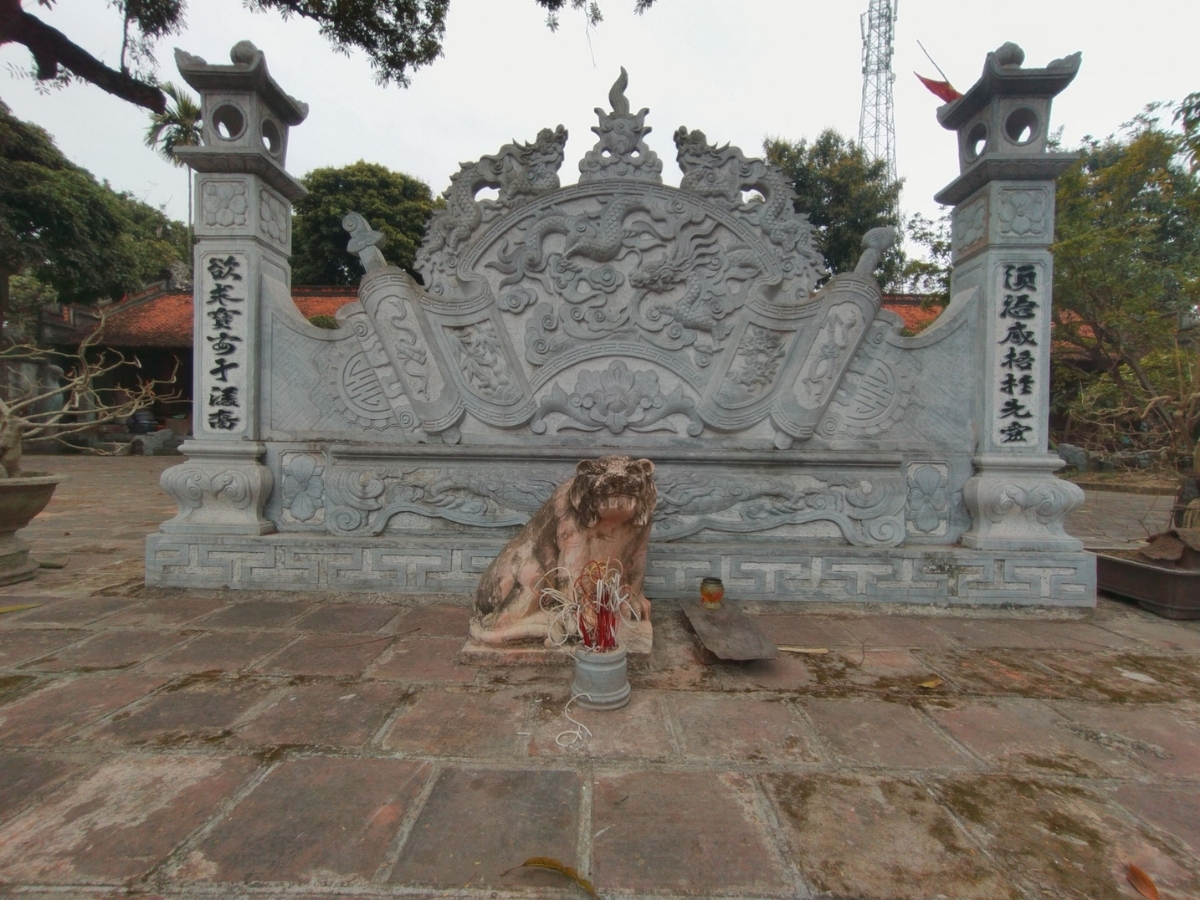
The space outside Nghe Vet Temple. (Source: Compilation)
During the reign of Lord Trinh Kiem, the relic was expanded and officially named Nghe Vet Temple, built on a large scale, consisting of imposing horizontal and vertical structures. The complex has a задний двор (hau cung) housing the throne and tablet of Mr. Trinh Ra, with side rooms dedicated to Mrs. Hoang Thi Doc, Trinh Kiem's mother, and 12 generations of Trinh lords. The entire temple was constructed from large ironwood logs carefully selected from various regions, roofed with horseshoe tiles, showcasing the exquisite construction techniques of hundreds of skilled craftsmen nationwide.
Nghe Vet Temple is situated on a spacious area of approximately 2,000 m², facing South, with its back against the mountain and its front towards the river. In front of the courtyard, there is an ancient stone stele intricately carved with patterns, which produces a deep, resonant sound like a bell when struck. Stone screens and a pair of kneeling stone turtles flanking the entrance create a solemn atmosphere, while also warding off evil spirits and protecting the sanctity of the worship space.
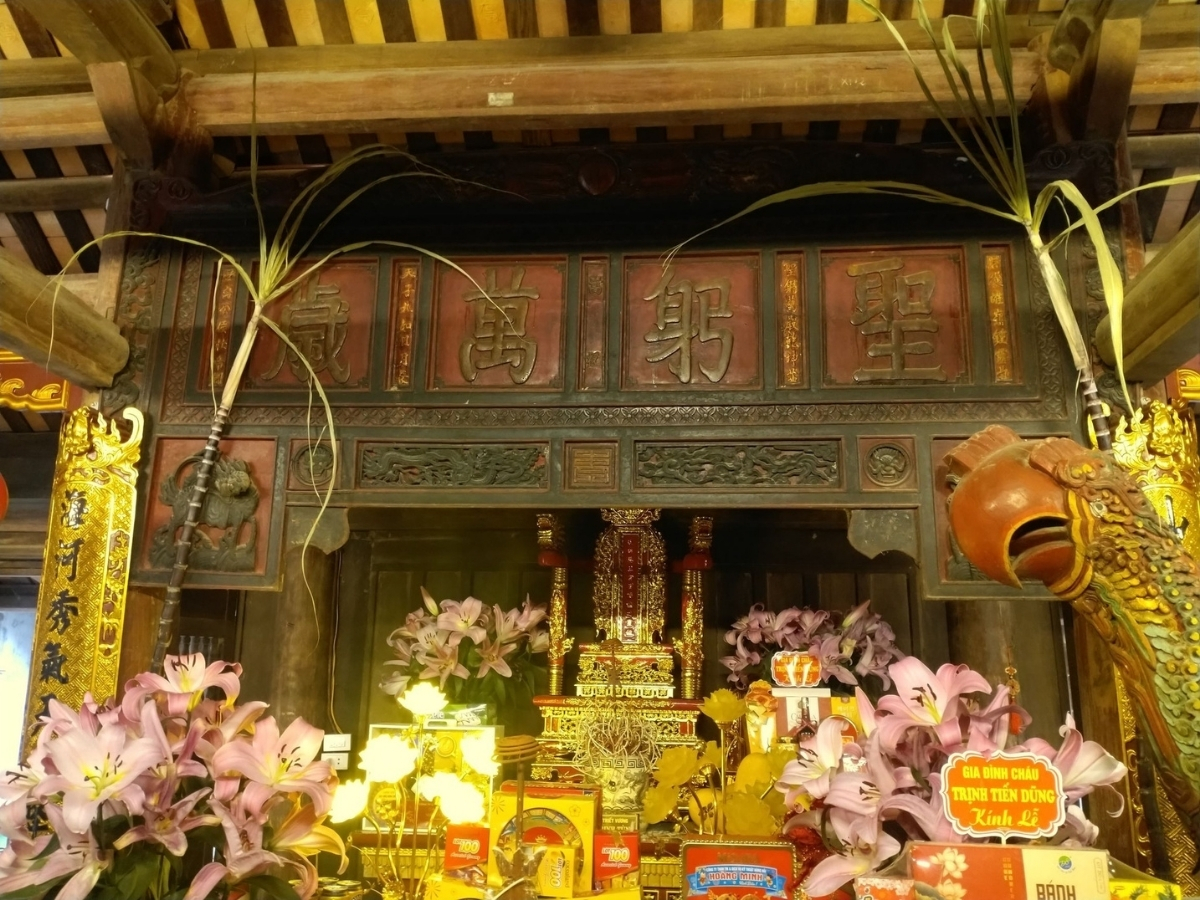
Solemn worship space inside Phủ Trịnh (Trinh Palace) and Nghè Vẹt (Parrot Temple). (Source: Collected)
Upon entering, visitors will clearly feel the ancient breath and solemnity through precious artifacts such as horizontal lacquered boards, seated statues, palanquins, and wooden horses. Particularly, the pair of wooden parrots placed solemnly in the inner sanctuary are considered the spiritual symbol of Nghè Vẹt (Parrot Temple). According to legend, when Trịnh Kiểm's mother passed away, a flock of parrots flew to shelter her body for many consecutive days. Moved by this event, Trịnh Kiểm had a pair of wooden parrots carved to commemorate and acknowledge the merit of these loyal birds.
4.3 Phủ Trịnh Festival
Annually, the Phủ Trịnh Festival is held from the 16th to the 18th of the second lunar month at the historical site of Phủ Trịnh (Trinh Palace) and Nghè Vẹt (Parrot Temple), Vĩnh Lộc commune. This is an occasion for the local people and visitors from all over to remember Minh Khang Thái Vương Trịnh Kiểm and the Trịnh lords, while also honoring the traditional cultural values of the Thanh land.

The Phu Trinh Festival is held in 2024. (Source: Collected)
The festival consists of two main parts: the solemn ceremony part includes rituals of Ancestor Worship and Proclamation, Proclamation Ceremony, Anniversary Ceremony, and incense offering; the vibrant festival part features local product displays, folk games, tug-of-war, cultural performances, and the "Trung Hung Gam Vóc" program reenacting the history of the Trinh family.
More than just an occasion to honor ancestors, the festival is also a major cultural event for the people of Vinh Loc, demonstrating the spirit of "drinking water, remembering its source" and pride in their homeland's heritage.
5. Experience and Notes
To make your journey to explore Phu Trinh and Nghe Vet more complete and meaningful, visitors should keep a few things in mind:
It is advisable to choose modest and polite attire, prioritizing long pants and long-sleeved shirts to show respect; avoid wearing overly short, tight, or brightly colored clothing.
Maintain a solemn demeanor, move gently, speak softly, and refrain from laughing or making noise in the worship areas.
Avoid touching ancient artifacts or entering restricted areas to help preserve the cultural value of the relic.
If visiting during a festival, choose a suitable time of day to explore comfortably.
Bring a camera or phone to capture beautiful shots of the relic site; note that flash photography is not allowed, and maintain quiet and solemnity when taking pictures in the worship areas.
6. Suggested Combined Visits
6.1 Ho Citadel
Not far from Phu Trinh and Nghe Vet, Ho Citadel is a must-visit destination when exploring the Vinh Loc region. Recognized by UNESCO as a World Cultural Heritage site, this structure was built in the late 14th century under the Ho Quy Ly dynasty. The relic stands as a powerful testament to the talent and intellect of ancient Vietnamese people.

Ho Dynasty Citadel is a prominent relic, recognized by UNESCO. (Source: Collected)
The citadel was built entirely with massive blue stone blocks, each weighing up to tens of tons, fitted tightly together without any adhesive. Despite over 600 years of history and numerous changes, many sections of the walls, archways, and moats remain intact, creating a unique ancient architectural marvel in Southeast Asia. Visiting this place, tourists will admire its majestic, solemn beauty and feel proud of the construction engineering essence of their ancestors.
6.2 Lam Kinh Historical Site
Lam Kinh, associated with the establishment of the Le Dynasty, bears the distinct historical mark of the Early Le period. It is not only a place to worship King Le Thai To but also preserves many ancient structures such as Thien An Palace and Thai To's tomb. The solemn atmosphere and picturesque scenery here particularly attract those who love history and culture.
6.3 Sam Son Beach
After a journey to explore historical traces, tourists can spend time relaxing at Sam Son Beach. With its long stretch of white sand, clear blue water, gentle waves, and high-class resort services, Sam Son is an ideal stopover to enjoy the fresh atmosphere of Thanh Hoa's coastal region.
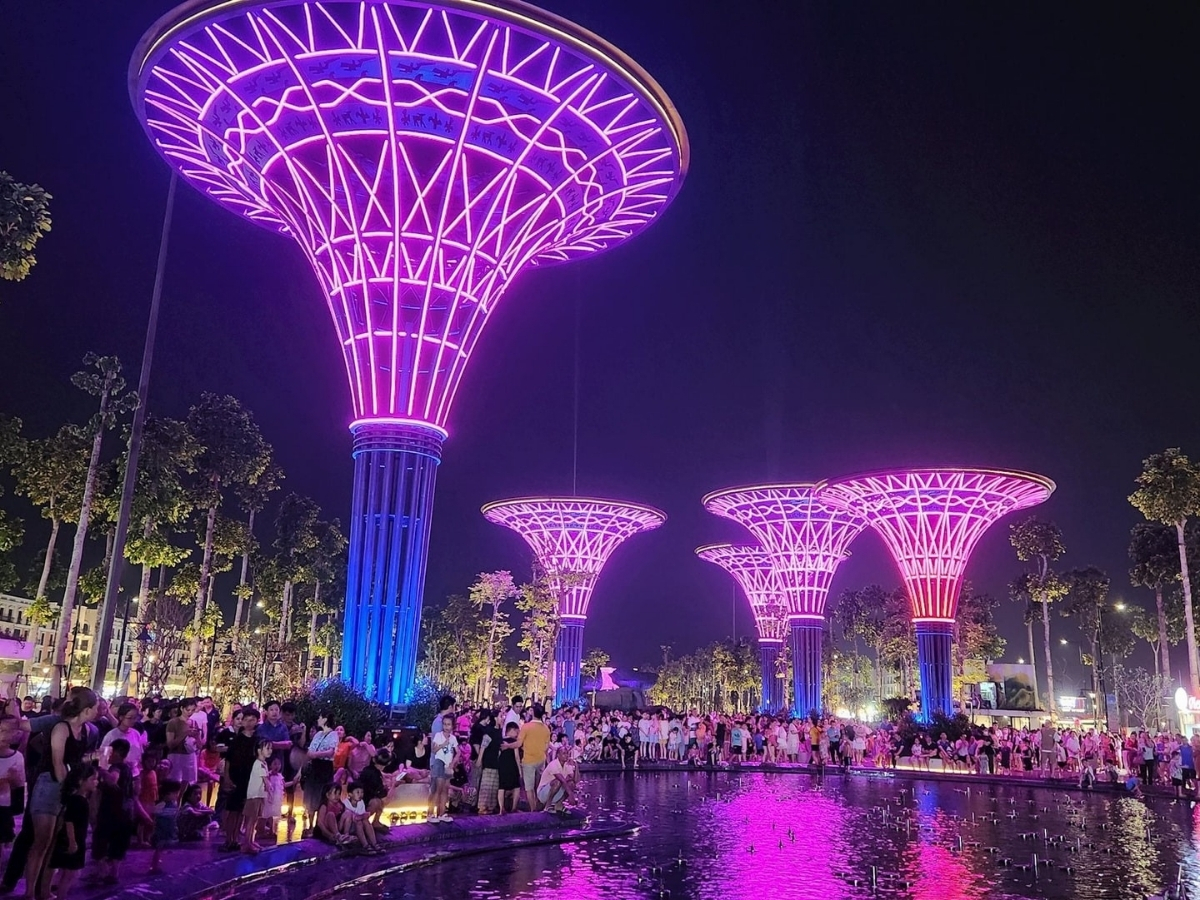
Sam Son Sea Square attracts a large number of tourists. (Source: Collected)
The special highlight here is the Sam Son Sea Square. This is a modern, large-scale project, likened to the "new heart" of the coastal city. The square stands out with its symbol of a spacious and airy open space, with a capacity of up to 10,000 people. This is where cultural events, light festivals, art performances, and outdoor music shows are regularly held.
Phu Trinh and Nghe Vet are not only spiritual tourist destinations but also a journey that takes visitors back in time, returning to the cultural roots and history of the Vietnamese nation. Coming to Phu Trinh and Nghe Vet, visitors can not only worship at a sacred place but also have the opportunity to deeply feel the spirit of "drinking water, remembering its source", pride, and gratitude towards their ancestors. Let yourself stop by the land of Bien Thuong once to feel your heart calm amidst the sacred and peaceful beauty of Thanh land.


